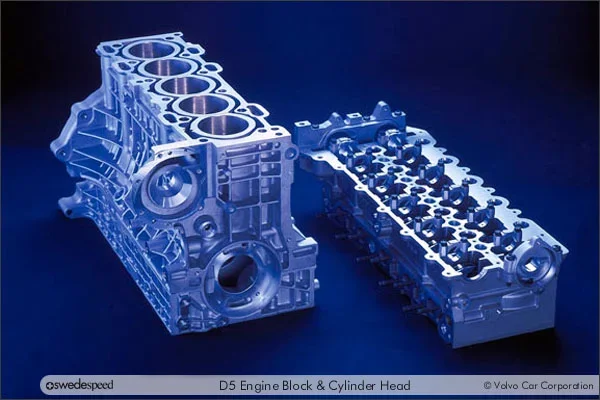Engine-pedia: the Swedish meatballs, deep-diving Volvo’s powerhouse turbo Whiteblock 5-cylinder
The turbocharged inline five-cylinder engine, affectionately known by enthusiasts as the "Whiteblock," is arguably the most significant performance engine in Volvo's modern history. Launched in the early 1990s as a cornerstone of the all-new Volvo 850, this engine architecture revolutionized the brand, establishing its credentials in the premium and performance segments.
The "Whiteblock" (named for its initial unfinished aluminum appearance) engine family was a pivotal moment for Volvo, marking the shift from the venerable cast-iron "Redblock" (B2XX) to a new, fully modular, all-aluminum design. Designed for a transverse (sideways) application in the FWD 850 chassis, the engine family was engineered for maximum packaging efficiency and safety in a frontal collision.
The Whiteblock engine was designed from the outset with a modular architecture, sharing common bore spacing and other dimensions to allow for efficient production of 4-, 5-, and 6-cylinder variants (B4XXX, B5XXX, B6XXX). The five-cylinder layout provided an optimal balance of smoothness (due to even firing intervals), compact packaging, and high torque output.
The first turbocharged five-cylinder variant was the B5234T, a 2.3-liter unit found in the Volvo 850 T5. This engine propelled Volvo into the World Touring Car arena and set the benchmark for the subsequent performance models, culminating in the high-output B5234T4/T5 (R-Engine) and later B5254T4 (S60R/V70R) variants, which incorporated advanced features like Continuously Variable Valve Timing (CVVT) on all four cams and sophisticated engine management systems.
The table below compiles highly specific technical data for some of the most prominent turbocharged five-cylinder gasoline Whiteblock engines.
Note: Dimensions are approximate for the transverse application and vary slightly depending on ancillaries/chassis.
The Whiteblock engine is a legend in the tuner community due to its inherent strength and unique exhaust note. The five-cylinder layout creates a distinctive, aggressive sound that appeals strongly to enthusiasts, often described as a cross between an inline-four and an inline-six.
The block's open-deck design is reinforced by a girdle, and the engines utilise a strong forged steel crankshaft, a robust foundation that can handle significant increases in boost pressure and power.
Simple ECU tunes (Stage 1/2) can yield substantial power gains (e.g., a stock 250 HP B5254T can easily reach 300+ HP), as Volvo often slightly detuned these engines from the factory. High-output builds often involve upgrading to larger turbochargers (like the BorgWarner K24 from the R-models) and strengthening the rods/pistons for power outputs exceeding 400 HP.
While mechanically robust, the Whiteblock is known for several recurring issues that require preventative maintenance:
Positive Crankcase Ventilation (PCV) system clogging is arguably the most notorious issue. A clogged oil separator box and associated lines lead to excessive crankcase pressure, which can blow out camshaft seals, the rear main seal, and, in severe cases, cause oil leaks or even turbocharger failure due to oil backing up.
Early electronic throttle modules (ETM) used on 1999–2002 models (Marelli unit) are prone to failure, resulting in unpredictable idle, surging, or "limp home" mode. Later versions used a more reliable Bosch unit.
Some later generation 2.5L engines (B5254T3/T12) have been reported to suffer from excessive oil consumption, often attributed to a revised piston ring design that can become stuck or ineffective over time.
As with any interference engine, timing belt maintenance is critical (typically every 70,000–105,000 miles, depending on model/year). A common related failure is the serpentine belt tensioner, which, if it fails, can allow the serpentine belt to be pulled into the timing belt cover, causing catastrophic engine damage.
The Whiteblock engine was a staple of the Volvo lineup from 1991 until its final phase-out around 2016 (though some markets saw it slightly longer). These engines are readily available in the used market, sourced from a wide variety of platforms, including the classic 850, S70, V70 (P80 chassis), and the second-generation S60, V70, S80, C30 (P2 chassis).
The 2.5L turbocharged five-cylinder (e.g., B5254T3 variants) was famously used by Ford in high-performance applications such as the Ford Focus ST and the Focus RS (with power outputs up to 305 HP), providing excellent cross-platform engine availability.





